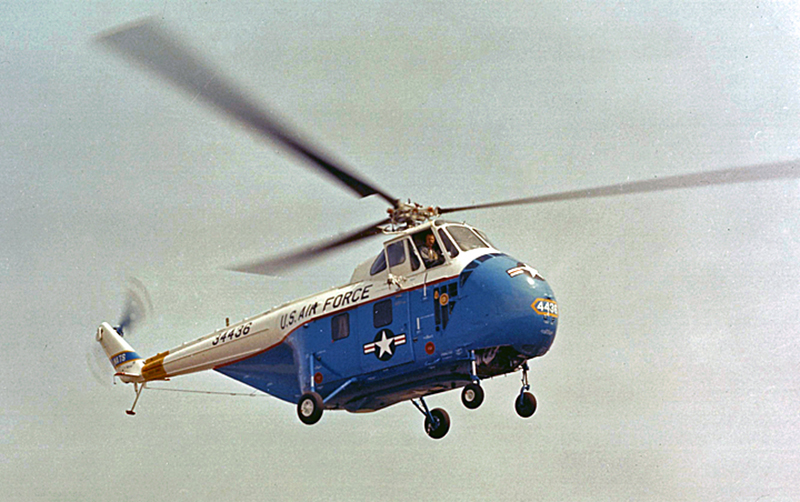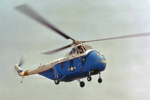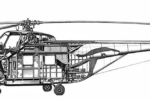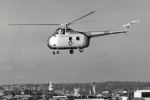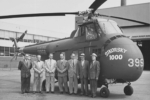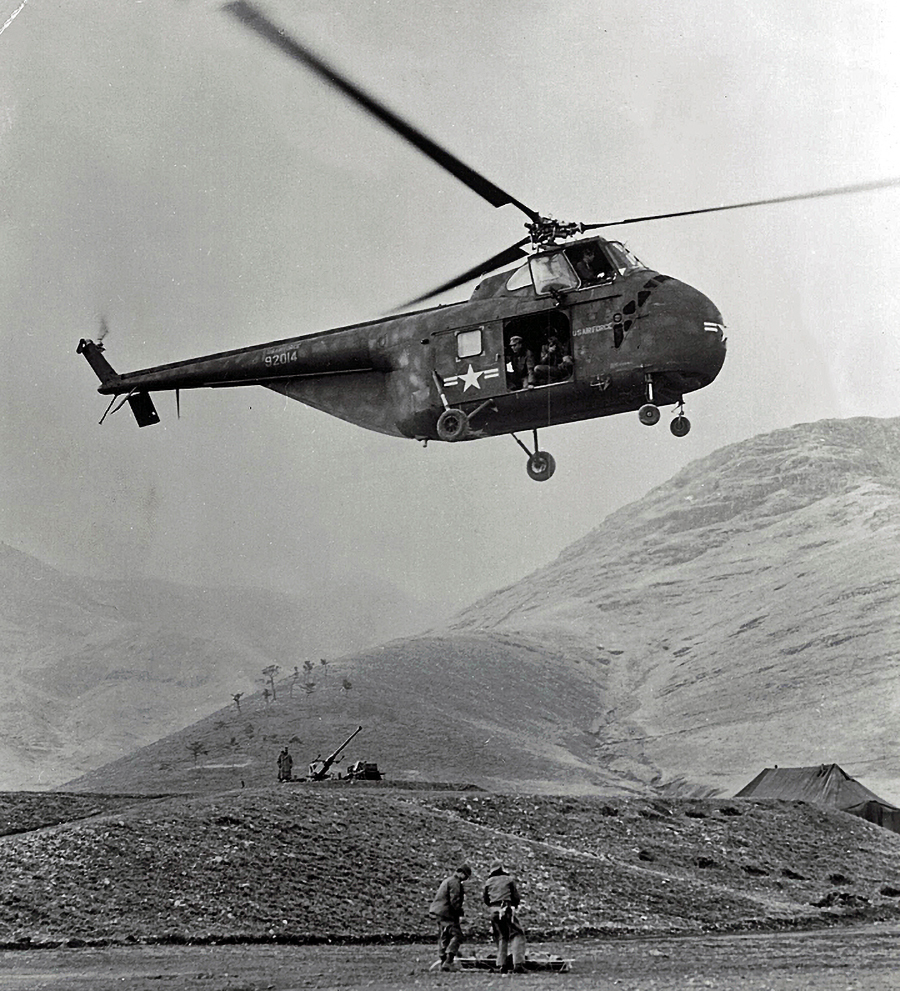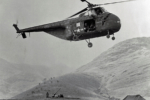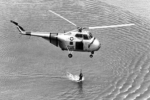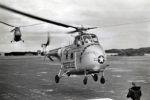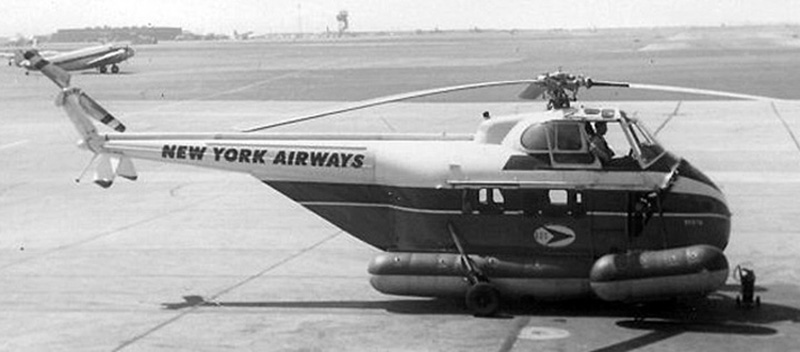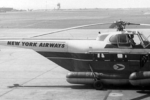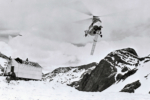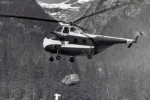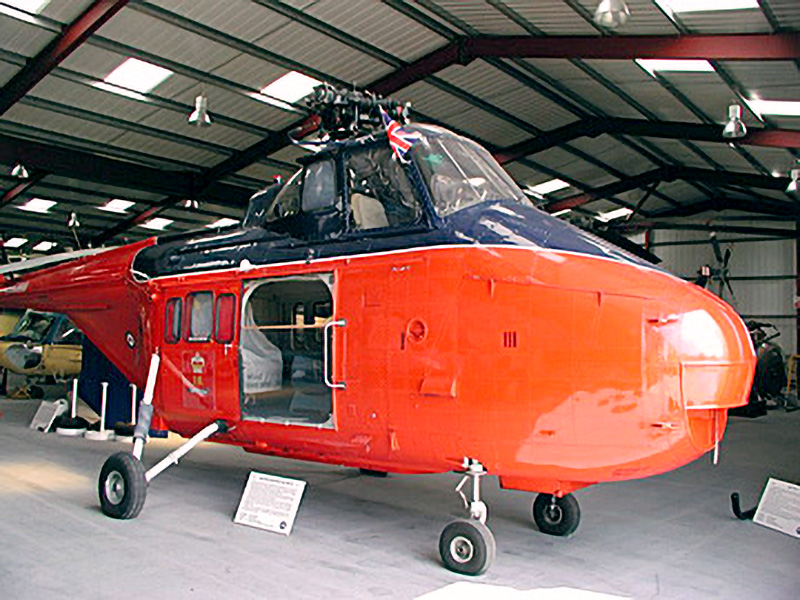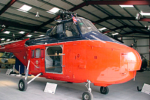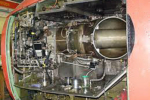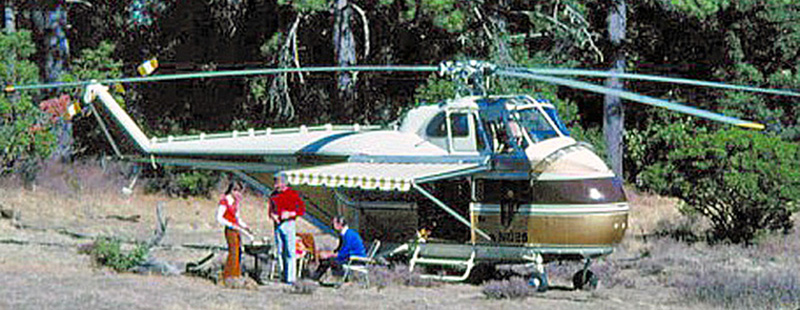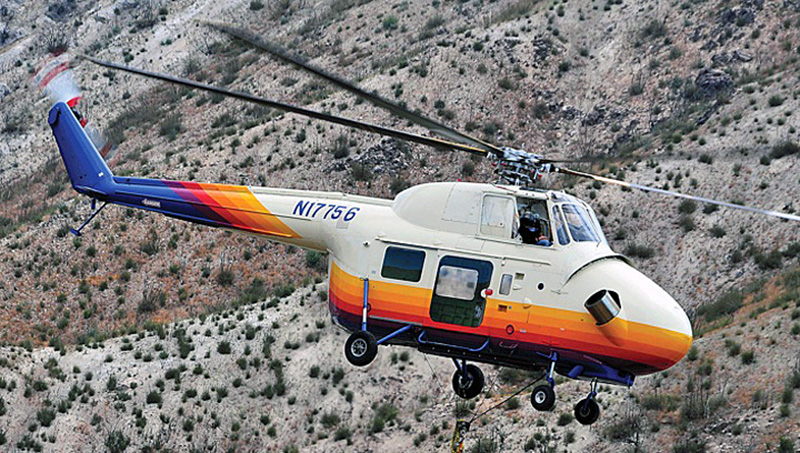Sikorsky Product History
Sikorsky S-55
Background
The Sikorsky S-55 helicopter was a utility helicopter developed with company funds and without government sponsorship. Sikorsky designed and fabricated a mockup of an entirely new model with many novel features in less than one year. Its most significant novel features included unique placement of its piston engine and the incorporation of offset hinges in its main rotor head. Engine placement below and forward of the cockpit resulted in a large cabin directly below the main rotor and the rotor’s offset hinges provided large control moments to enable a wide center-of-gravity range. The result was achievement of nearly unrestricted placement of passengers or cargo in a relatively spacious cabin. Both of these novel features were major departures from Sikorsky’s earlier configuration as embodied in the R-4, R-5 and R-6 models and were responsible for the development of a highly successful design well suited to larger utility helicopter models. This configuration, as embodied first in the S-55, led to Sikorsky capturing a major share of the worldwide utility market and it further led to foreign competitors copying this configuration. Of the many helicopter designers who helped develop this new configuration, Edward F. Katzenberger provided the creative spark that made it all come together successfully.
The first customer was the U.S. Air Force who ordered five YH-19 helicopters for service evaluation. First flight was on November 10, 1949 less than a year from the program start date. The S-55 helicopter was a giant step forward for Sikorsky helicopter designs and with its 10 passenger capacity and the 2,000 pound external lift capacity was a true transport helicopter. The Air Force deployed a YH-19 helicopter to Korea in March 1951 for evaluation and the day after arrival it assisted in evacuating paratroops.
In addition to its new engine placement and its main rotor offset hinges, theS-55 also featured all metal main and tail rotor blades which had been introduced on late model S-51 helicopters. Hydraulic main rotor servos, also introduced on late model S-51 helicopters, provided “Power Steering” for the pilots and eliminated main rotor control loads from reaching the cockpit control sticks..
The S-55 was designed for easy maintenance. The clam shell doors on the nose provided full access to the engine compartment. such that an engine change required only 2 hours. The main rotor head/main gearbox assembly Quick Change Unit (QCU) required only 3 hours to replace. It was possible to change every major component including engine, clutch, main transmission, main rotor head, flight control system intermediate transmission, tail gear box, and tail rotor head in 12-15 man-hours or in as little as 5 hours elapsed time.
The S-55 was air transportable in C-82, C-119, and C-124 aircraft.
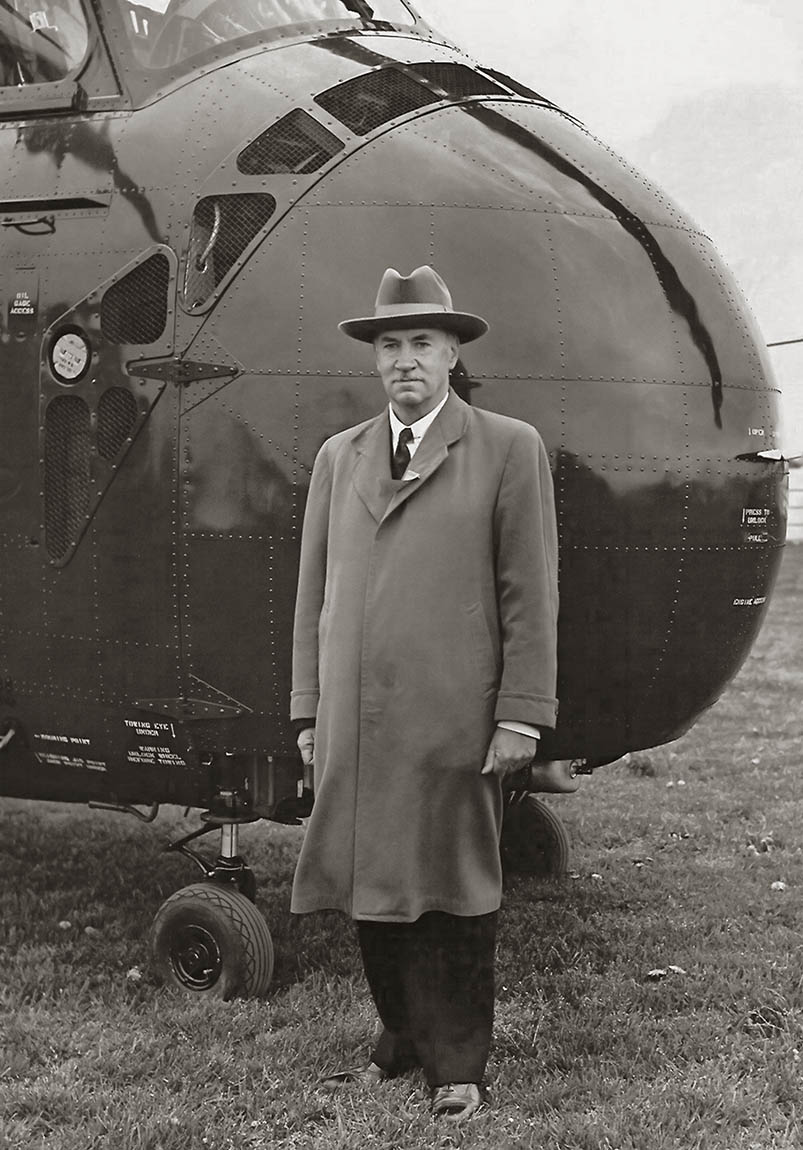
Sikorsky S-55 Models by Customer
Customer | Model No. | Old Model No (Prior to 1962) | Nickname | Mission |
|---|---|---|---|---|
U.S. Air Force | YH-19 | Service Evaluation | ||
U.S. Air Force | UH-19A | H-19A | Utility, 600 hp P&W Engine | |
U.S. Air Force | HH-19A | SH-19A | Search and Rescue | |
U.S. Air Force | UH-19B | H-19B | Utility, 700 hp Wright Engine
| |
U.S. Air Force | HH-19B | SH-19B | Utility, 700 hp Wright Engine
| |
U.S. Navy | HO4S-1 | Utility, 600 hp P&W Engine
| ||
U.S. Navy | UH-19F | HO4S-3 | Utility, 700 hp Wright Engine
| |
U.S. Navy | SH-19F | HO4S-3 | Utility, 700 hp Wright Engine
| |
U.S. Coast Guard | HH-19G | Utility, 600 hp P&W Engine
| H04S-3G | Utility, 700 hp Wright Engine
|
U.S. Army | UH-19C | H-19C | Chickasaw | Utility, 600 hp P&W Engine |
U.S. Army | UH-19D | H-19D | Chickasaw | Utility, 700 hp Wright Engine |
U.S. Marine Corps | HRS-1 | Utility, 600 hp P&W Engine | ||
U.S. Marine Corps | HRS-2 | Utility, 600 hp P&W Engine | ||
U.S. Marine Corps | CH-19E | HRS-3 | Utility, 700 hp Wright Engine | |
Commercial | S-55 | Passengers/Cargo, 600 hp P&W Engine | ||
Commercial | S-55B | Converted Military models with 700 hp Wright Engine | ||
Commercial | S-55C | FAA Improved Model. 600 hp P&W Engine | ||
Commercial | S-55D | Export Model, 700 hp Wright Engine | ||
Westland Whirlwind | HRS-2 | HAR.21 | HRS-2 for Royal Navy | |
Westland Whirlwind | HO4S-3 | HAS.22 | HO4S-3 for Royal Navy |
Military Service
All U.S. Military services ordered the S-55. The Air Force identified it as the H-19, the Navy and Coast Guard as an HO4S, the Marine Corps as an HRS, and the Army as a CH-19. This was before 1962, when all U.S. military services adopted a uniform model identification system.
Military Helicopter Developments
U.S. Air Force
The first YH-19 arrived in Korea in March, 1951 for service testing with a second arriving in September, 1951.
Based on successful operational testing, the U.S. Air Force ordered 50 production H-19A helicopters. On July 15 1952 two H-19A helicopters named Hop-A-Long and Whirl-O-Way, stripped of all unnecessary equipment and with three 100 gallon auxiliary fuel tanks in the cabin, self-deployed from Westover AFB, Massachusetts to Wiesbaden AFB, Germany. The first transatlantic crossing by helicopter followed a great circle route via Presque Isle, Maine – Goose Bay, Labrador – Narsarsuaq, Greenland – Keflavik, Iceland – Prestwick, Scotland. After welcoming ceremonies in Scotland, the 2 helicopters continued on to Schiphol, Holland and arrived at Wiesbaden AFB, Germany on August 4, 1952, a 4,220 mile trip. The longest leg of this trip was the 850 mile over water leg from Keflavik, Iceland to Prestwick, Scotland.
U.S. Air Force H-19 helicopters performed many rescues in Korea including night rescues and rescues behind enemy lines. Others duties included transferring wounded from the field to Mobile Army Surgical Hospital (MASH) units and from MASH units to larger hospitals, and inserting/retrieving Allied agents behind enemy lines. The 3rd Air Rescue Squadron evacuated over 7,000 wounded during the Korean War utilizing both H-5 and H-19 helicopters. They also rescued 170 pilots from behind enemy lines and from the Yellow Sea.
U.S. Navy
HO4S-1 helicopters started arriving in 1952 to replace the HO3S-1 helicopters. The first HO4S-1 helicopter was delivered to Helicopter Utility Squadron HU-2 at NAS Lakehurst, N.J. Later Helicopter Utility Squadrons HU-1 San Diego California was equipped with some HO4S-1 models which saw limited service in Korea.
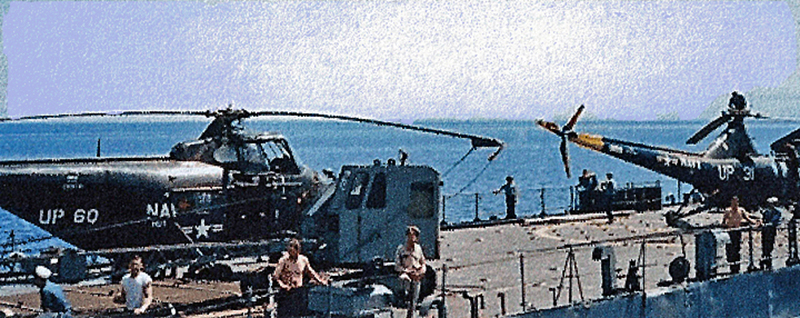
U.S. Marine Corps
HMR-161 arrived in Korea on September 2, 1951 with 15 HRS-1 helicopters. The new helicopter squadron wasted no time in demonstrating their capabilities. On September 13, 1951 HMR-161, during Operation Windmill I, transported 18,848 pounds of gear and 74 Marines into a ridgeline position in the Punchbowl area. A week later HMR-161 shuttled 224 Recon Company Marines and 17,772 pounds of supplies to a remote hilltop in the same area.
Their performance continued to improve and in Operation Haylift II in February 23-27, 1953, HMR-161 lifted 1.6 million pounds of cargo to resupply two regiments. Although HMR-161 helicopters were operating in hot landing zones they did not lose any helicopters to enemy fire.
HRS-1 helicopters were also used to relocate Rocket Launcher Batteries. Because rockets create much visible dust when fired they make an easy target for enemy artillery. To reduce their exposure, men and launchers were moved twice a day. HRS-1 helicopters carried four rocket launchers and extra rockets as external cargo with the crew in the cabin.
The HRS-1 helicopter proved to be durable and reliable. One reportedly flew home after losing 18 inches of main rotor blade to a tree. HMR-161 reported 90% aircraft availability.
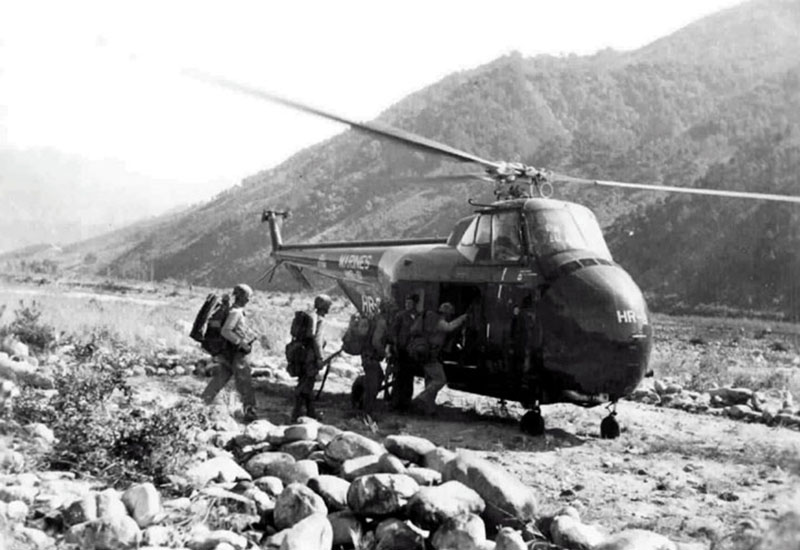
U.S. Army
The U.S. Army was late in arriving in Korea after successfully overcoming a U.S. Air Force objection to the Army acquiring “heavy” helicopters. The first unit, the 6th Transportation Company (Helicopter) arrived in March 1953. They immediately went to work resupplying forward elements of the 3rd Division that were cut off by floods on March 20, 1953. Ten H-19 C helicopters in 30 round trips provided 33,925 pounds of food, ammunition, and charcoal to a landing spot 300 yards from a main line of resistance. In June 1953 the Army and Marines joined forces in the largest helicopter operation of the war using 45 helicopters to move 800 Republic of Korea (ROK) troops.
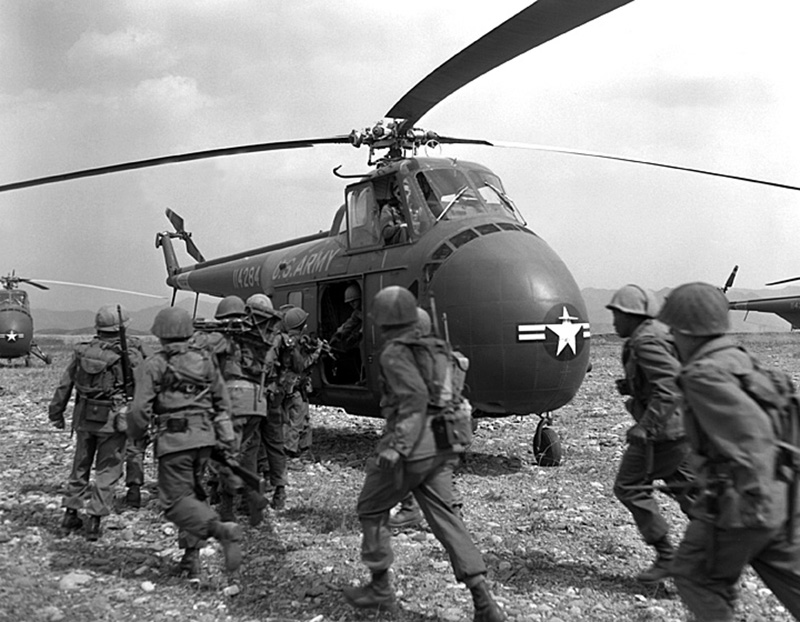
Anti Submarine Warfare (ASW)
The U. S. Navy purchased 10 HO4S-1 helicopters. Some of these were assigned to the newly formed HS-1 at NAS Key West, Florida. Their mission was to develop helicopter submarine hunter/killers. The HO4S-1 proved to be underpowered for the mission. The Navy then tried the Piasecki HUP-1 tandem rotor helicopter which was also proved to be underpowered for the mission. When the HO4S-3 helicopter equipped with the R-1300 700 hp engine became available it proved to be adequate for the mission. The Navy then had its first operational daylight VFR ASW helicopter.
S-55 Commercial Helicopters
The commercial model of the S-55 helicopter received Civil Aviation Agency (CAA) certification on March 25, 1952. The first customer was New York Airways which established service between the three New York area airports on July 9, 1953 becoming the first scheduled helicopter airline to carry passengers in the United States. Service was later expanded to include a Heliport at W.30th Street and the West Side Highway and service to Teterboro Airport, N.J., White Plains, N.Y., and Stamford Connecticut.
S-55 sales continued with deliveries to Los Angeles Helicopter Airline which was upgrading from their S-51 helicopters. Sales to Canada were made commercially through the Canadian Subsidiary of Pratt & Whitney. Foreign sales to Belgium (SABENA), Japan, India and, Argentina followed. Petroleum Helicopters purchased their first S-55 in 1954 to support oil operations in the Gulf of Mexico.
On October 3, 1956 the S-55C with an inclined tail cone to prevent main rotor blades from contacting the tail cone during hard landings was certified by the CAA. Sikorsky continued to use the 600 hp Pratt & Whitney engine on the S-55C model.
With its 2,000 lbs. of external cargo capability, the S-55 was popular for construction projects in inaccessible areas. In Canada, the S-55 was used by Okanagan Helicopters Services to build a hydroelectric and bauxite smelting projects for Aluminum Company of Canada some, 500 miles from Vancouver in the wilds of British Columbia. A 50 mile power transmission line requiring 350 towers at elevations up to 5,300 feet was erected by the S-55 helicopters. Components for the transmission lines, supplies, men, and a complete camp to support 125 men were lifted into a mountain pass.
Both commercial S-55C and Royal Canadian Air Force H-19 helicopters were utilized to build the Distant Early Warning (DEW) line, an early warning radar system designed to warn of a USSR bomber attack on the United States and Canada. Building supplies and construction personnel were hauled to building sites in spite of an inhospitable climate.
S-55 Development Timeline
First Flight
First Delivery to U.S Air Force
First Delivery to U.S. Navy
License Agreement Signed with Westland Aircraft
First Deployment
First Delivery to U.S. Marine Corps
HMR-161 Deploys to Korea
First Delivery to U.S. Coast Guard
First H-19 Delivered to U.S Air Force
License Agreement Signed with SNCASE
CAA Type Certification Issued
First Commercial S-55 Delivered
First Delivery to Los Angeles Airways
First Transatlantic Crossing
First U.S. Army H-19A Mission
CAA Type Certification of S-55C
U.S. Navy Retires Last CH-19E
Configuration Features
Fuselage
The Sikorsky S-55 fuselage was an aluminum framed cabin with aluminum and magnesium skins. Plexiglas windows surrounded the pilot and copilot sitting above and behind the engine with the engine driveshaft between the seats. Cabin seating was provided for 10 passengers or 6 litters and a medic. Civilian models provided cabin seating for 7 passengers. A hatch was provided in the cabin floor to allow the crew to observe cargo hook external loads and provide direction to the pilot.
The S-55 helicopters were modified to several different configurations during their years of service. In addition to the civilian S-55 and S-55C models, the S-55 was operated by the U.S Navy as the HO4S /USMC as HRS, the USAF as H-19, SH-19, and the USCG as the HO4S-2/3G. Surplus military models for all services could be modified and FAA Certified as the S-55 and S-55B.
Main Rotor Assembly
A 3 bladed fully articulated main rotor head with an offset flapping hinge (9 inches for the rotor centerline) which increased the allowable center of gravity limits and improved handling qualities was installed on the S-55 helicopter. The rotor diameter was 53 feet.
A hydraulic servo system provided power assist to the flight controls and eliminated feedback of main rotor vibrations to the cockpit. Two fingers were all that was required to move the cyclic pitch stick in flight.
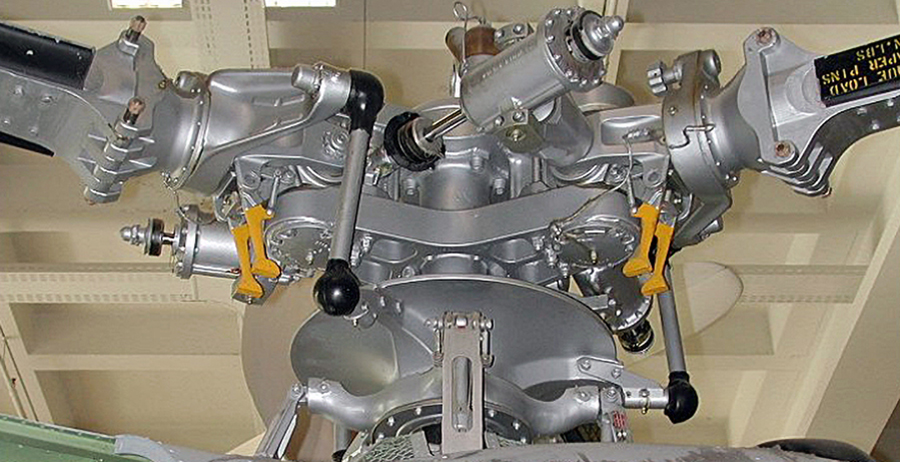
Tail Rotor Assembly
A 2 bladed 8’ 8” diameter tail rotor with all metal blades was installed on the S-55 helicopter. A 2 bladed 8’ 9” diameter tail rotor with all metal blades was installed on later model S-55 helicopters with the inclined tail cone which prevented the main rotor blades from contacting the tail cone during a hard landing.
Main Gear Box
The main gear box contained a spiral bevel gearing stage followed by a two stage planetary reduction gear system which reduced engine rpm at a 11.3155 to 1 ratio for driving the main rotor. Take-off shafting from the main gear box housing extended aft to the intermediate gear box and then back to the tail rotor gear box and tail rotor. Accessories driven by the main gear box were the generator, generator blower, flight control servo hydraulic pump, rotor tachometer generator, and main gear box oil pump. A freewheeling unit in the input section of the main gear box disconnected the engine from the main gear box allowing autorotation in the event of engine failure.
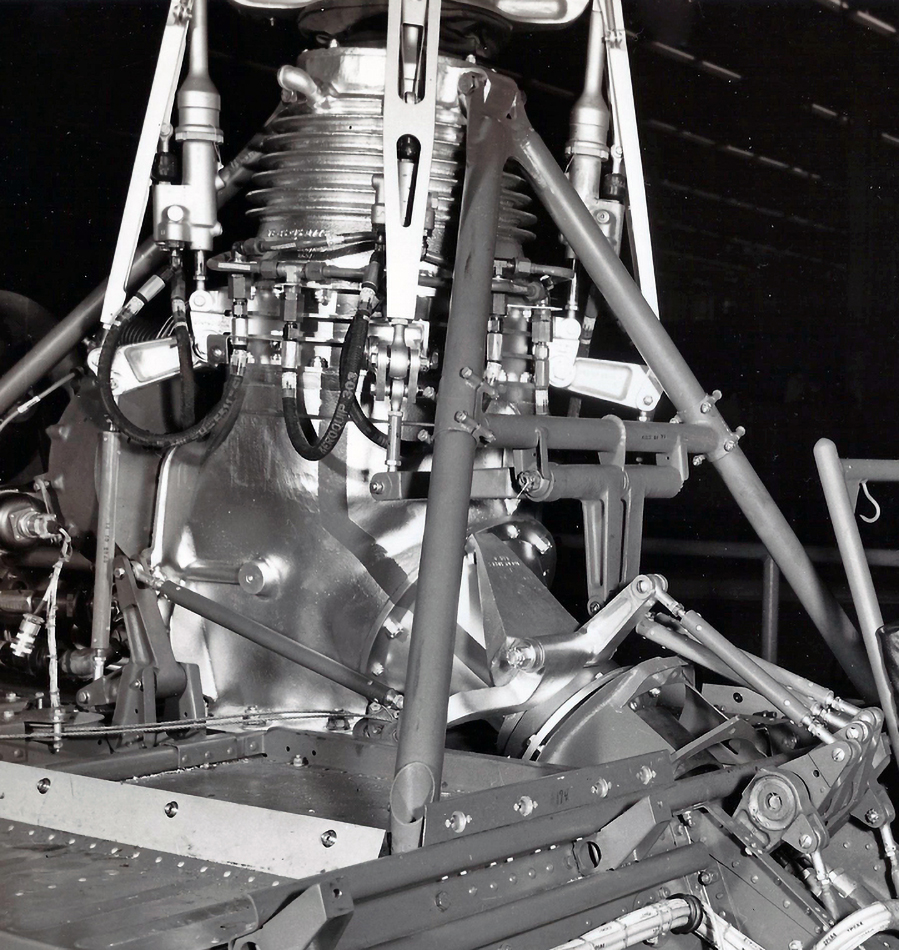
Engine
Sikorsky’s chief of advanced design and later chief engineer, Edward F. Katzenberger, created the first major innovation to increase the allowable center of gravity travel in the S-55 design. His idea was to relocate the reciprocating piston engine from under the rotor to a location forward of the cabin and below the cockpit. This was a dramatic configuration change that opened up a spacious cabin compartment directly below the main rotor. As a result, payload could then be carried on or near the aircraft’s center of gravity and essentially in line with the rotor’s rotational axis. This relocation of the engine also made the engine more accessible and maintenance easier by virtue of large clamshell doors that opened to expose the engine at ground level.
A Pratt and Whitney nine cylinder R-1340-57, 600 hp air cooled radial engine was installed at a 35 degree angle in the nose of the helicopter. Later model military S-55 models used a seven cylinder Wright R-1300-3, 700 hp air cooled radial engine. Since the engines were installed in reverse from a conventional installation, the engine accessories were readily serviceable through large clam shell doors.
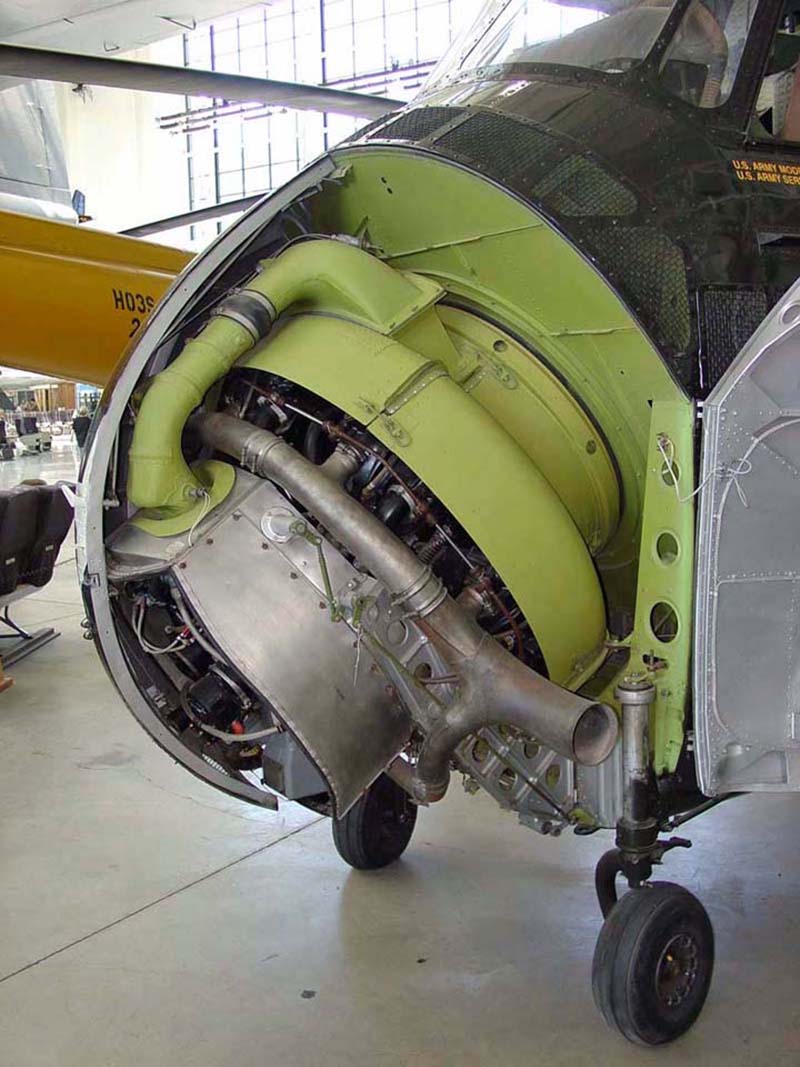
Hydro-Mechanical Clutch
The Military model S-55 with the R-1300-3 engines incorporated a hydro mechanical clutch which replaced the centrifugal clutch which automatically connected the engine to the main gear box when a certain RPM was reached. This was a first for Sikorsky helicopters. Functions of the hydro mechanical clutch were:
- Provide a direct mechanical coupling between the engine and the transmission system.
- Permit engine to be started and operated at any speed when completely disengaged from the transmission system.
- Provide smooth and rapid acceleration of the rotor blades and transmission during clutch engagement.
The hydro mechanical clutch consisted of a hydraulic oil pump and reservoir to a fluid coupling for clutch engagement. Once the clutch completed a direct mechanical connection with the transmission system, the oil pump was turned off and oil drained from the coupling.
Main Rotor Blades
The main rotor blades were constructed with aluminum spars, aluminum ribs, aluminum pockets with a honeycomb filler. All blades were balanced and tabbed on the main rotor blade whirl stand against a master blade and stenciled with the required adjustment on installation. This eliminated the requirement to manually track blades when installing a replacement blade. Later model main rotor blades featured spars pressurized to 10 psi with nitrogen. Indicators were added to the blades which were checked on preflight to confirm spar integrity. This feature was called BIM for Blade Inspection Method. It was invented by Sikorsky and first employed on the S-58 model main rotor blades and then offered to S-55 customers. All metal spar main rotor blades subsequently built included the BIM feature. The BIM system provided a major improvement to flight safety by giving the pilots and/or ground crew a way to determine the structural integrity of the blade spar just prior to flight. An indicator mounted at the blade root end would change color if the spar developed the smallest crack thereby releasing the internal nitrogen pressure which activated the indicator position and visible color change.
General Arrangement Drawing
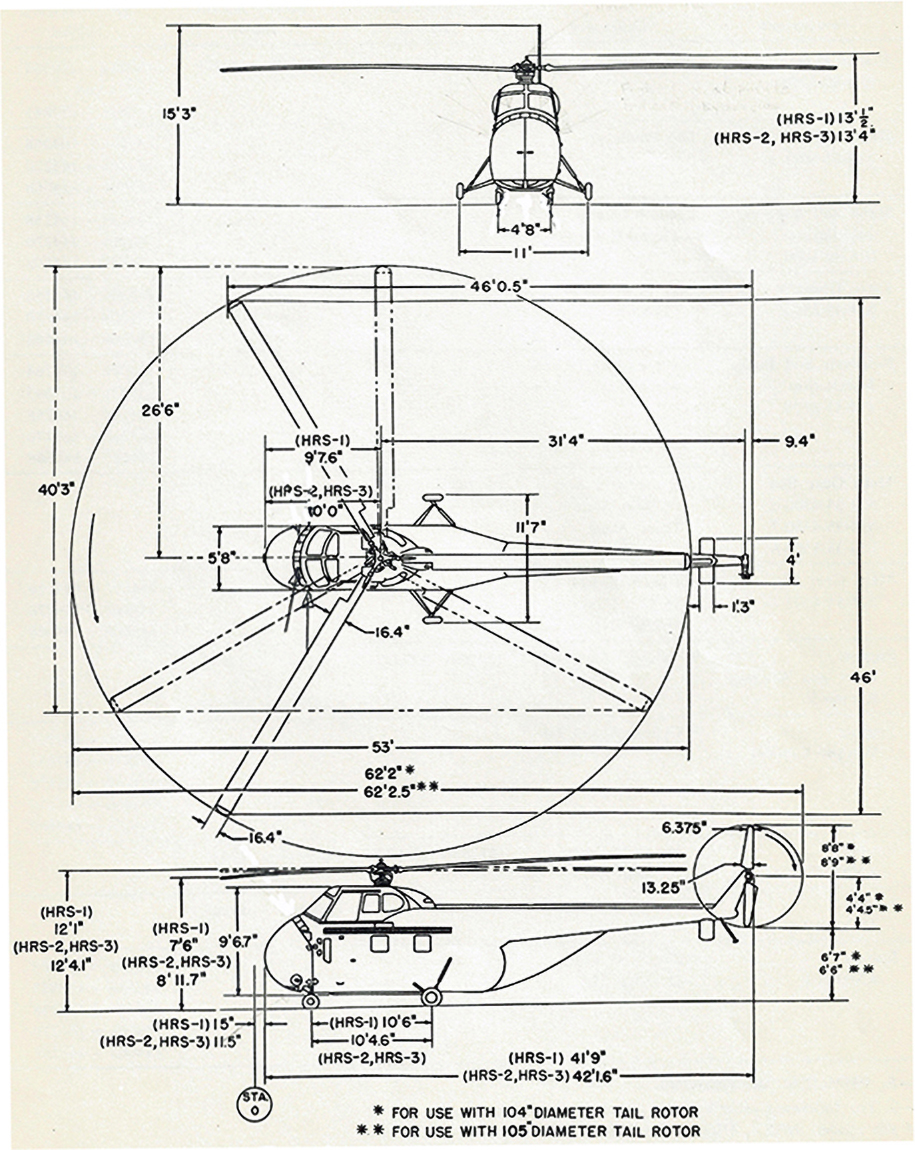
Mission Systems
Rescue Hoists
400 pound Capacity Hoist. Early S-55 helicopters and all Commercial S-55 helicopters offered a foldable 400 pound capacity rescue hoist which was mounted above the cabin door. The hoist cable ran through a conduit in the cabin to a reel and hydraulic motor in the baggage compartment at the rear of the cabin. A crank on the cabin overhead moved the hoist arm to the hoist position and folded it flat against the fuselage when not in use.
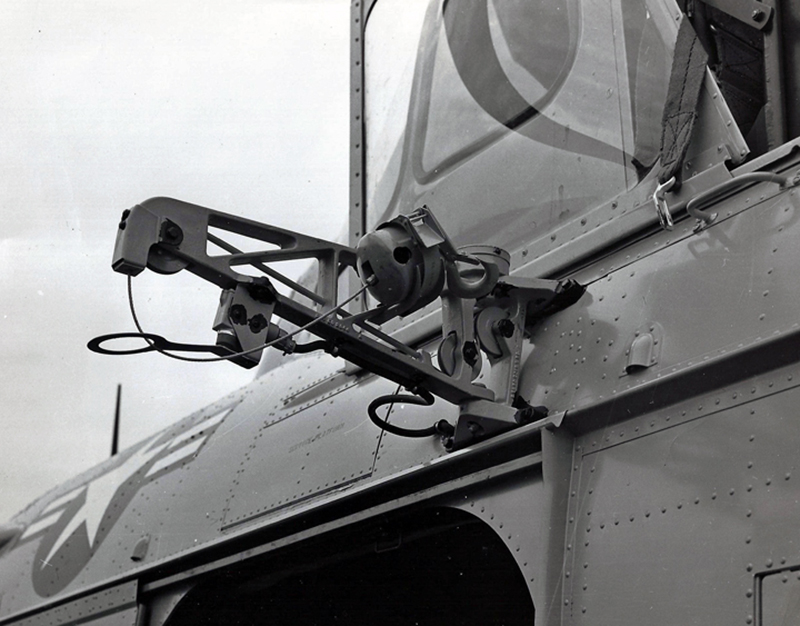
600 pound Capacity Hoist. On later model S-55 Military helicopters, a self-contained hoist mounted over the cabin door was provided. This hoist provided an increase in lifting capacity and more reliable service.
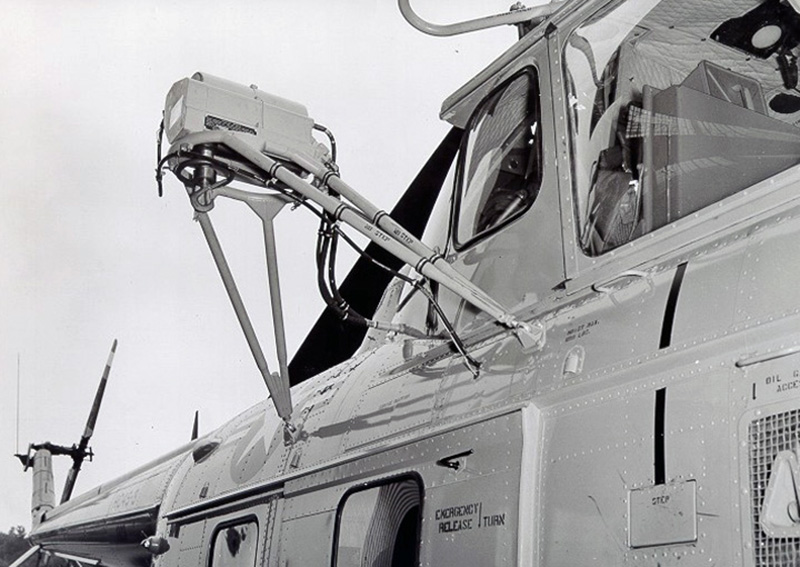
Rescue Basket
The U.S Coast Guard developed a rescue basket which allowed an injured person to be scooped up from the water and recovered. In a rescue on December 24, 1955 at Yuba City California Air Force and Navy helicopters were assisting but only carried a “Horse Collar” for recoveries. After a Navy helicopter dropped a survivor it was decided to allow the Coast Guard to do the lifts and the other helicopters would spot survivors. A single Coast Guard helicopter flying 2 hour shifts, with one pilot and a hoist operator, and refueling without shutting down recovered 138 people in 15 hours of continuous operation.
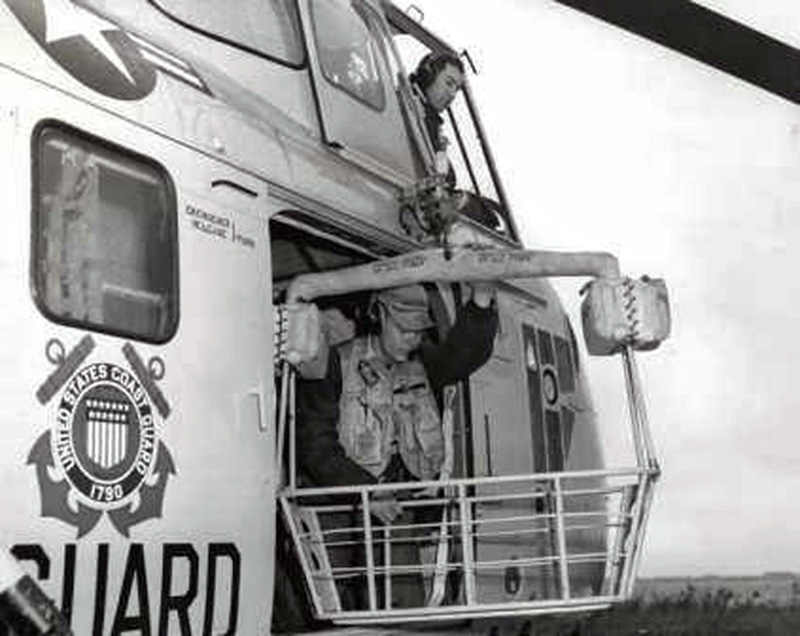
Rockets on Rotor (ROR)
A Marine HRS-2 helicopter was outfitted with small (1 pound) rocket motors in the Tip Caps of the main rotor blades which added 35 pounds of thrust to each blade. ROR was fueled by hydrogen peroxide with the propellant tank mounted on the top of the main rotor which fueled the system for. The complete system weighed approximately 67 lbs.
The system was developed in conjunction with Sikorsky Aircraft was first test flown by Sikorsky pilots on March 9, 1954. After 6 months of developmental testing, the Marines demonstrated it to the public at NAS Anacostia, Washington, D.C. on September 16, 1954.
The ROR system allowed:
- Takeoff with greater loads
- Improved autorotation performance
- Improved rate of climb and hover ceiling
The development tests were successful and provided many benefits at a modest increase in weight. However, the system was never adapted for any helicopters.
A 1955 video of the ROR produced as a Contract requirement by Reaction Motors Inc. is available below.
General Characteristics and Performance for the S-55 Commercial
Performance Standard Day at Sea Level | |
|---|---|
Maximum Speed (Vne) | 95 kts / 161 km/hr |
Range | 405 mi / 651 km
|
Service Ceiling | 11,400 ft / 4,511 m
|
Rate of Climb | 730 ft/min / 3.7 m/s
|
Weights | |
|---|---|
Maximum Takeoff Gross Weight | 7,200 lbs / 3,271 kg |
Weight Empty | 4,785 lbs / 2,173 kg
|
Maximum Fuel Load | 185 gal / 698 ltr
|
Useful Load | 2,415 lbs / 1,098 kg
|
General Data | |
|---|---|
Crew Seating Capacity | 2 |
Seating Capacity | 7 passengers |
Powerplant Ratings Standard Day at Sea Level | |
|---|---|
Pratt and Whitney R-1340 S1H2
| 600 hp / 447.6 kw
|
Wright R-1300-3
| 700 hp / 522.2 kw
|
Aircraft Dimensions | |
|---|---|
Main Rotor Diameter (Blade Tip Circle) | 53’ 0” / 16.10 m
|
Tail Rotor Diameter (blade tip circle) | 8’ 8” / 2.64 m 8′ 9″ / 2.87 m (w/ drooped tail) |
Fuselage Length | 42’ 2″ / 12.85 m
|
Length Overall (Including Rotors) | 62’ 2″ / 18.95 m 62’ 2.5″ / 18.99 m (w/ drooped tail) |
Height Overall | 13’ 4” / 4.07 m
|
Main Landing Gear Tread | 11’ 0″ / 2.64 m
|
Production History
- 5 U.S. Air Force YH-19
- 51 U.S. Air Force H-19A
- 264 U.S. Air Force H-19B
- 10 U.S. Navy HO4S-1
- 7 U.S. Coast Guard HO4S-1G
- 61 U.S. Marine Corps HRS-1
- 101 U.S. Marine Corps HRS-2
- 82 U.S. Marine Corps HRS-3
- 108 U.S. Navy HO4S-3
- 23 U.S. Coast Guard HO4S-3G
- 72 U.S. Army H-19C
- 281 U.S. Army H-19D
- 216 Commercial S-55, S-55C and Export model S-55D
License Built Helicopters
Westland Aircraft Ltd
- WS-55 Whirlwind Series 1. American Pratt & Whitney R-1340-40 (600 hp) engine.
- WS-55 Whirlwind Series 2 Alvis Leonides Major 755 14-cylinder, two-row radial (850 hp) engine.
- S-55-5 SOKO built WS-55 Series 2 helicopters in Yugoslavia for the Yugoslavia armed forces.
- WS-55 Whirlwind Series 3 Gnome Turboshaft (License built General Electric T-58) engine (1,050 hp).
- HAR.1 Search and Rescue (SAR) helicopter for the Royal Navy (RN).
- HAR.2 SAR helicopter for the Royal Air Force (RAF).
- HAR.3 SAR helicopter for the RN. Wright R-1300 (700 hp) engine installed.
- HAR.4 SAR helicopter for the RAF Wright R-1300 (700 hp) engine installed.
- HAR.5 SAR helicopter for the RN with Alvis (750 hp) engine and inclined Tail Cone.
- HAS.7 Anti-Submarine Warfare (ASW) helicopter for the RN
- HCC-8 VIP helicopters for the Queen’s Flight
- HAR.9 Modified HAS.7 RN ASW helicopters converted to Gnome Turboshaft (1,050 hp) engine.
- HC.10 RAF Cargo helicopters
- HAR.10 RAF SAR helicopters with Gnome Turboshaft engine.
- HCC.12 VIP helicopters for the Queen’s Flight with Gnome Turboshaft engine.
SNCASE
Mitsubishi
Aftermarket Modifications
- by Vinny Devine
Related Articles
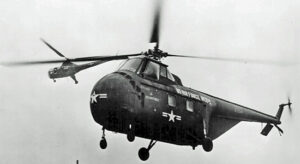
Sikorsky Grows the Helicopter – the S-55
The Sikorsky S-55 gave the U.S. armed services a much larger and more capable helicopter than the S-51, and ensured Sikorsky Aircraft leadership in vertical flight.
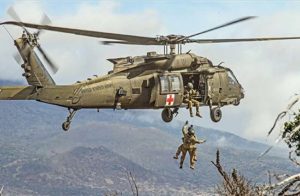
Sikorsky Lifts the Army
The U.S. Army saw the possibilities of the helicopter early in its development, thus beginning a relationship with Sikorsky Aircraft that continues to this day.

Sikorsky Builds Marine Corps Heavy Lift
The evolution of the Marine Corps’ CH-53K King Stallion heavy lift helicopter beginning with the Sikorsky S-56 in 1953.
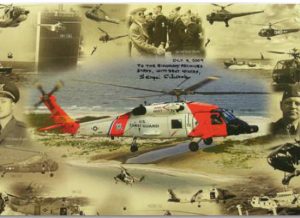
Sikorsky Serves the Coast Guard
A flight demonstration of Igor Sikorsky’s VS-300A helicopter at Bridgeport, Connecticut in April 1942 started an air-sea rescue revolution in the U.S. Coast Guard.
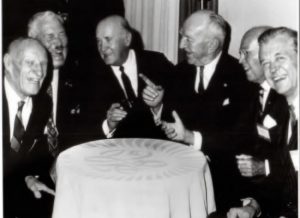
Predictions of a Pioneer
Igor Sikorsky’s predictions for air travel in general and for helicopters in particular have been largely realized or surpassed.
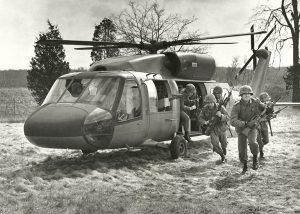
Ray Leoni: Recollections of a Sikorsky Junior Engineer
Ray Leoni recollects his 41-year career at Sikorsky Aircraft, beginning as a junior engineer and retiring as a Senior VP of Engineering and Advanced Programs.
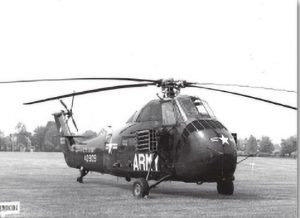
Evolution of the Armed Helicopter
Military users quickly understood the flexibility and fire-power of rotary wing platforms and ultimately evolved highly integrated weapons systems ready to protect themselves and others.
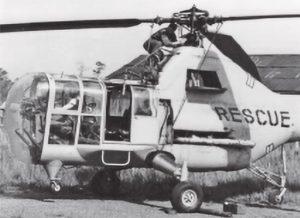
Sikorsky Helicopters in U.S. Air Force Rescue Squadrons
The HH-60W Combat Rescue Helicopter is the latest in the life-saving line of Sikorsky helicopters made for U.S. Air Force Rescue Squadrons. The Whiskey will round out a century of vertical flight rescue heroism.
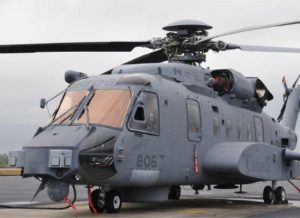
Sikorsky’s Sub Hunters
Today’s MH-60R gives the U.S. Navy the world’s most advanced ASW helicopter. However, the potential of the helicopter in ASW was recognized even before the Navy and Coast Guard flew their first Sikorsky R-4s in World War II.
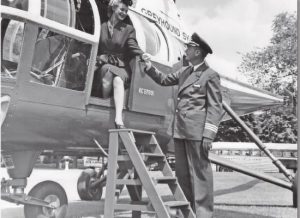
Sikorsky Helicopters in Airline Service
Early in the evolution of Sikorsky helicopters, Igor Sikorsky and his team envisioned scheduled passenger flights serving major cities.
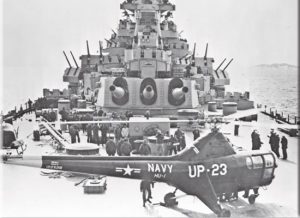
Sikorsky Helicopters Came of Age in the Korean War
Prior to the Korean War, the U.S. armed forces had few helicopters and little combat helicopter doctrine. The Korean conflict drove rapid combat helicopter development.
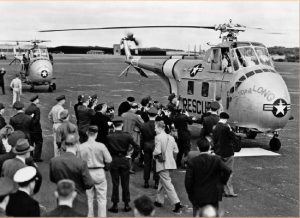
Sikorsky Aircraft Cross the Atlantic
This issue of the newsletter recognizes the anniversaries of a VS-44A flying boat setting a record for crossing the Atlantic non-stop; S-55 helicopters self-deploying to Europe; and S-61 helicopters flying non-stop to Paris.

